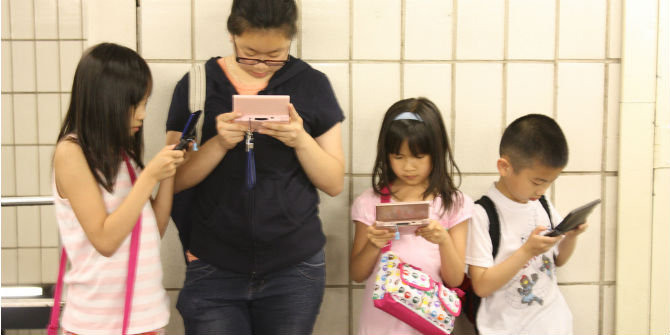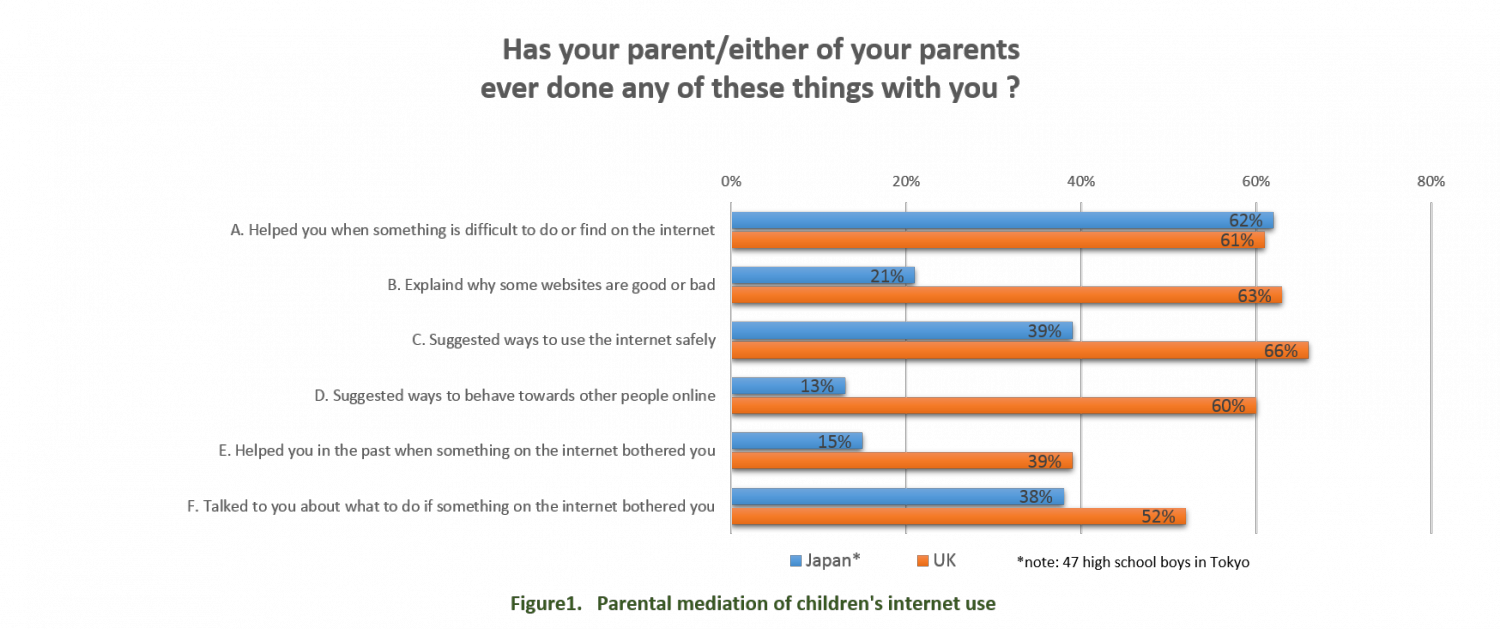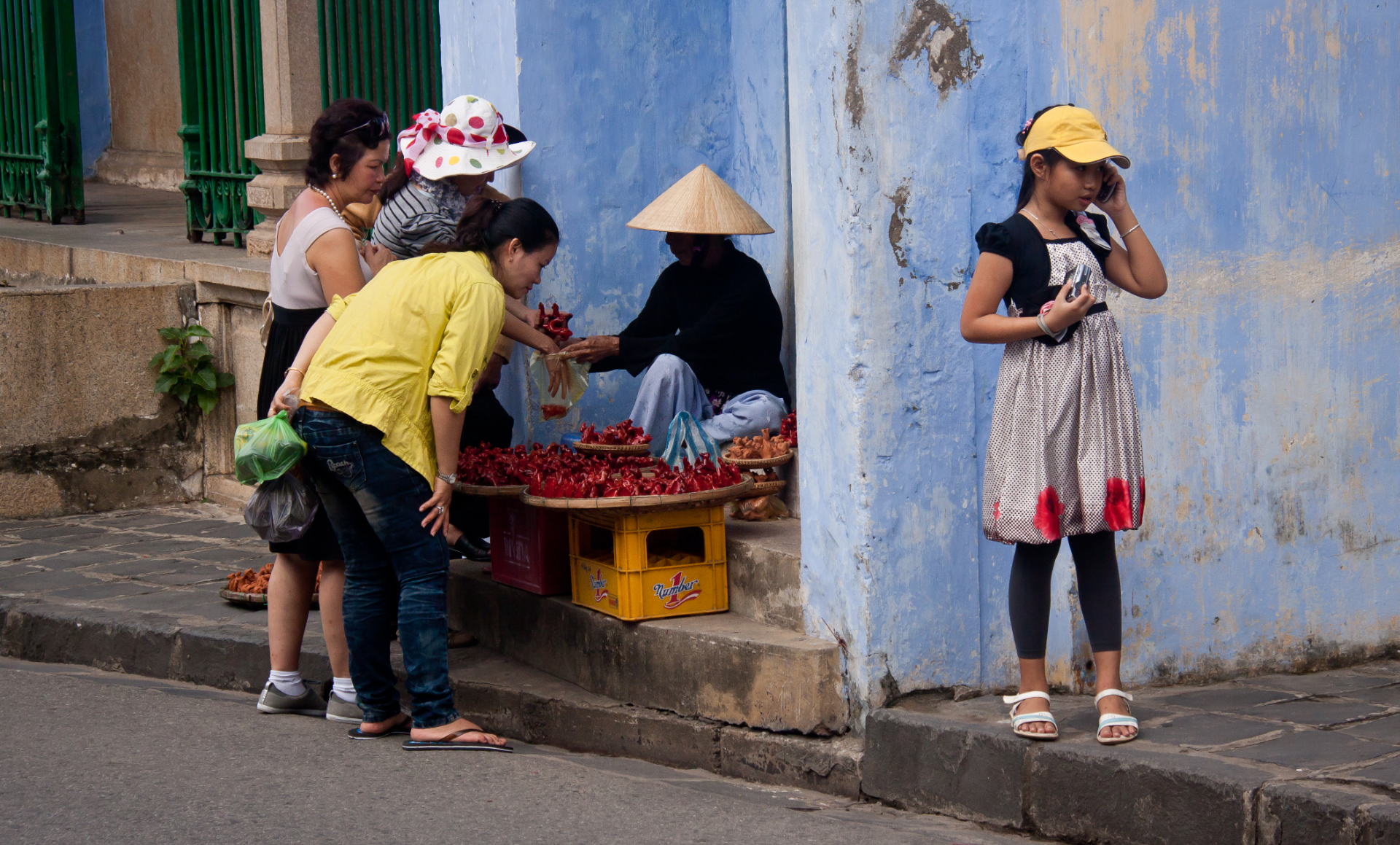Every time we share content online, from tweets and Facebook posts to creating blogs, websites and leaving comments, we contribute to forming our digital identity. Toshie Takahashi finds that in Japan, parents are less involved in teaching their children about the internet. She argues that parents need to overcome their blind spots and become active mediators to help children build digital literacies. Toshie is Professor in the School of Culture, Media and Society at Waseda University in Tokyo. Her current research is an ethnography centred on cross-cultural research into youth and digital media among US, UK and Japan.
Young people are often called ‘digital natives’ because they are born in the digital age. However, digital natives are not born with digital literacy; they learn it. And like all learning, this means making mistakes again and again. There are particular risks in digital communication, even at home, and parents need to understand these risks.
High school game using Twitter
In October 2014, I visited a boys’ school in Tokyo, where I had been conducting my fieldwork. Sixteen-year-old Kenta[1] told me about his Twitter account, which his friends had created for him – without his prior knowledge. It is a sort of game that students in his class like to play, particularly on the more popular classmates. Kenta’s friends would tweet the funny things that he said, and upload photos of his funny expressions. Once, they tried to strip him naked for a photo. His friends would even retweet and reply to his girlfriend’s Twitter account. Kenta has more than 100 followers and knows that many enjoy this game, so he feels he cannot delete this Twitter account. When I asked Kenta and his friends, they said that they believed that only their friends could see the tweets and photos. They’re wrong. The tweets and photos are open to the public. Therefore, anyone can search and see them.
 Credit: B. Tsang, CC BY-NC-ND 2.0
Credit: B. Tsang, CC BY-NC-ND 2.0
Digital tattoos: Twitter is not an extension of a safe classroom
For the schoolboys I met, this was all a game, an extension of the safe space they experienced at school. Unfortunately, this is the internet, and there can be no guarantee of an enclosed and safe space in social media. The funny tweets and embarrassing photos are accessible to the public, and run the risk of acquiring interpretations and purposes they were never intended for. Furthermore, information and images circulating on the internet never quite disappear but always linger, as if they were a digital tattoo. Therefore, the innocent tweets and photos on Kenta’s Twitter account may actually stick with him all his life. And who knows how they may eventually feature in his adult years?
Who knows best? The parents or the children?
The task of educating our children about these risks must fall, to a great extent, on the parents. Compared to UK data, however, it seems clear that parents in Japan tend to be less involved in their children’s internet use, as the following graphic from my research illustrates:
A white paper published by the Japanese government in 2014 showed that 83% of elementary school, junior high school and high school children (aged 10-17: n=1,817) learn about the internet at school, while only 28% learn from their parents. Yet what is striking is the proportion of parents who believe they are better informed about the internet than their children: 73% of parents of elementary school, 41% of parents of junior high school and 20% of parents of high school children think that they know the internet better than their children (n=1,993).
Smartphones – keeping children happy and safe
There is clearly room for parents to get more involved in their children’s use of the internet and social media. By knowing the risks and potential harms, parents become empowered to be active mediators between their children and the risks. In Japan, it is common for parents to buy mobile phones for their children, partly to keep them happy, and partly as a way of keeping a watchful eye on them. The irony is that the very tool that they feel keeps their children safe comes with its own set of risks. This is a blind spot that parents must wake up to.
NOTES
[1] Names have been changed to protect the identity of individuals.







